Creating compelling ads is a unique challenge for the luxury product and services industry. While the goal is to sell high-end products or services, simply listing features and benefits won’t quite cut it. Effective luxury ads should tell a story that resonates with the target audience and creates an emotional connection with the brand.
If your goal is to build an ad campaign for a luxury brand (be it your own brand or for a client), then we’ve got you covered.
In this blog post, we’ll reflect on some hallmark luxury brand ads and the spirited thought that went into making them. We’ll also touch on some core strategic concepts to consider when approaching luxury ads for the first time.
Why Luxury Ads Are Challenging
Luxury ads require a delicate balance between aspiration and accessibility. While the target audience wants to feel like they are part of an exclusive club, they also need to see themselves as attainable customers.
In other words, they need to be given the confidence that they belong with your brand. Ads can’t be so esoteric and exclusionary that it repels people, but they need to present as if the product or service is elite.
This can be a difficult line to walk, but the most successful luxury ads manage to do it with elegance and grace.
Luxury ads also thrive off intensely personalized and sensational language and images, which is getting harder to control with how digital marketing avenues are getting more automated. Automation is great in one sense, but it can tend to dilute ad copy to be relevant but highly generalized. No brand wants to appear generic, but it’s especially true with luxury companies.
When you’re selling non-essential goods or services, you have to make your offer stand out in a way that makes people desire your product beyond necessity.
Ads for luxurious products typically benefit less (or not at all) from bundle pricing, discounts or anything related to cost savings because the cost is usually less of a concern for customers.
Luxury buyers don’t want a bargain. They want exquisite quality and a vivid experience.
Let’s take a look at some examples to demonstrate what we mean.
Dive Deeper: The Benefits of Investing in Luxury Ads
5 Killer Examples of Luxury Ads that Sold an Experience, Not Just a Product
When it comes to crafting effective luxury ads, there are some brands that consistently set the bar high.
Here are five examples of luxury ads that tell a compelling story and capture the essence of the brand.
1) Chanel
Chanel’s “Chance” perfume campaign focused on preserving youth through a selection of fragrances targeted to 18 to 29-year-old women.
The ads showed spry young women acting energetic and bubbly in such a way to demonstrate the uplifting nature of the perfume series:
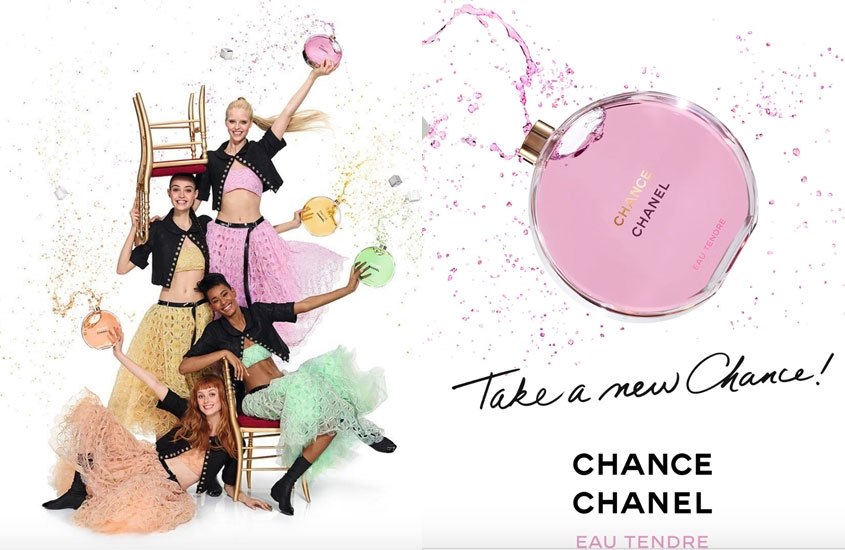
Chanel’s ads often feature visually stunning and cinematic narratives that engage viewers. The “Chance” campaign features high production values and glamorous settings, capturing the essence of luxury and elegance associated with the Chanel brand.
This ad series also evokes emotions and sensuality, appealing to the desires and fantasies of the audience. Through the use of elegant models and fun, playful imagery, the campaign creates an alluring lifestyle that entices viewers and invites them to imagine themselves as part of the Chanel world.
And, of course, Chanel has a rich history and iconic brand symbols that are seamlessly integrated into the “Chance” campaign. The ads feature the iconic Chanel logo, the signature Chanel packaging and the brand’s classic perfume bottle in motion imagery.
2) Dior
We can never forget the classically timeless ad from Dior featuring French actress Marion Cotillard, which showcased their lady Dior bag and some playful dance steps across and around a pool.
The video summary is: “Mixing classic French chanson with something more experimental and modern, the Marion Cotillard and Eliott Bliss written and directed video called ‘Enter the Game’ sees Marion dancing and defying gravity in a sleek modernist villa in the Provencal countryside, relaxing by the pool and showing off Dior’s Cruise 15 collection.”
The ad was not only enthralling when it came out many years ago, but it elevated the standards of its time for video ads related to luxury products.
It managed to present itself as reserved and assuming at the same time, endearing people to the brand through solid music and mystical emotion.
Dive Deeper: The Complete Guide to Brand Building (Must-Read for Digital Marketers)
3) Rolex
Rolex’s Perpetual Planet Initiative “supports individuals and organizations using science to understand the world’s environmental challenges and devise solutions that will restore balance to our ecosystems.”
This luxury watch brand launched their “Perpetual Planet Initiative” campaign to showcase their legendary craftsmanship and durability through a series of stunning and cinematic advertisements featuring vast landscapes, outer space and nautical settings.
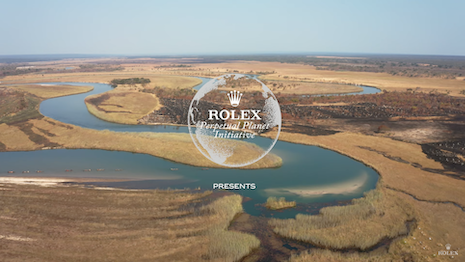
It complimented the luxury watch company by tying its values to environmental preservation efforts, which was appealing to its target audience, both new and old.
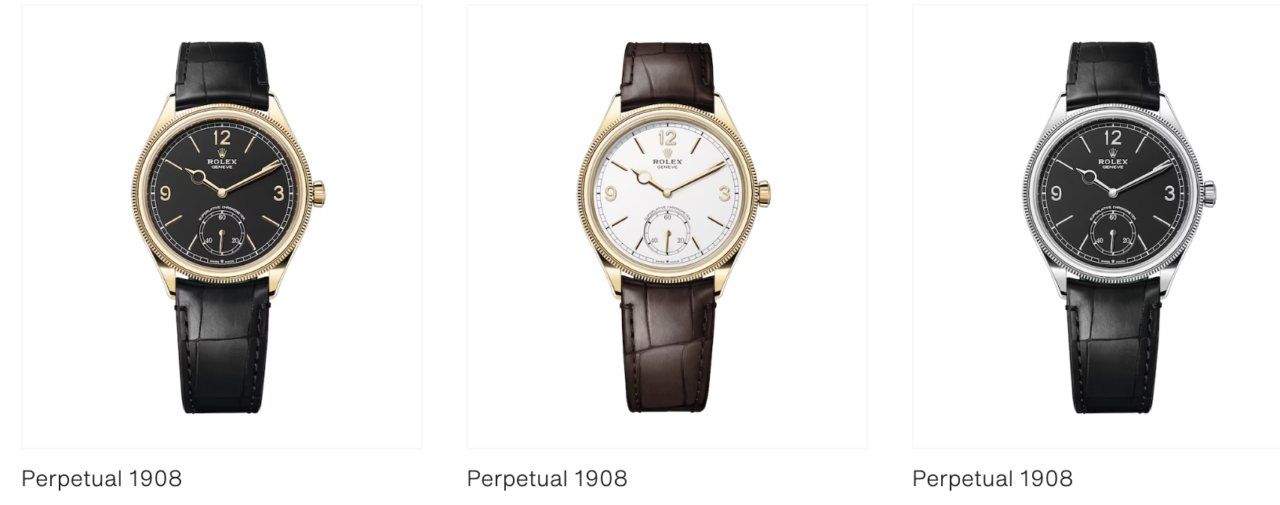
Rolex’s “Perpetual Planet Initiative” luxury ad campaign effectively tells a compelling story and captures the essence of the brand through the a few key elements:
- Environmental Stewardship: By aligning with an important cause, Rolex demonstrates its commitment to making a positive impact and resonates with individuals who value environmental stewardship.
- Partnership with Exploration and Discovery: Rolex ads often feature renowned explorers, scientists and conservationists who are actively engaged in researching and protecting the planet. These partnerships reinforce Rolex’s dedication to supporting and promoting groundbreaking scientific endeavors and initiatives.
- Compelling Storytelling: By weaving together narratives of adventure, perseverance and environmental consciousness, the campaign creates an emotional connection with the audience and emphasizes Rolex’s role as a catalyst for positive change.
- Iconic Brand Identity: By associating the brand’s iconic timepieces with meaningful endeavors, the campaign reinforces the idea that Rolex is not only a luxury brand but also a partner in creating a better future.
Dive Deeper: 9 Examples of Storytelling Marketing to Inspire Your Next Campaign
4) Versace
Versace’s “Bright Crystal” fragrance campaign features model Abbey Lee Kershaw in a series of glamorous and sensual ads that embody the brand’s opulence.
The advertisement portrays the model enamored by the glow of the fragrance as she caresses it across her cheeks. The psychological message imparted by this is to convince ad watchers that the fragrance could, in turn, make them glow, figuratively speaking, of course.
Luxury brands understand the importance of appealing to multiple senses. Versace’s “Bright Crystal” campaign leverages the power of audio-visual stimulation to create a sensory experience. The ad uses captivating music and visually appealing cinematography that evoke a feeling of luxury, indulgence and desire. By engaging multiple senses, the campaign enhances the overall impact and creates a memorable experience for the audience.
It’s a clever method to show people the beauty that they can unlock by trying the perfume.
5) Louis Vuitton
Louis Vuitton put out their “Spirit of Travel” campaign, which contained a string of luxury fashion ads and showcased the brand’s values through a journey through the Palm Springs desert in California.
It featured Michelle Williams and Alicia Vikander as the models, who portrayed an iconic expression of the brand’s new line of handbags:
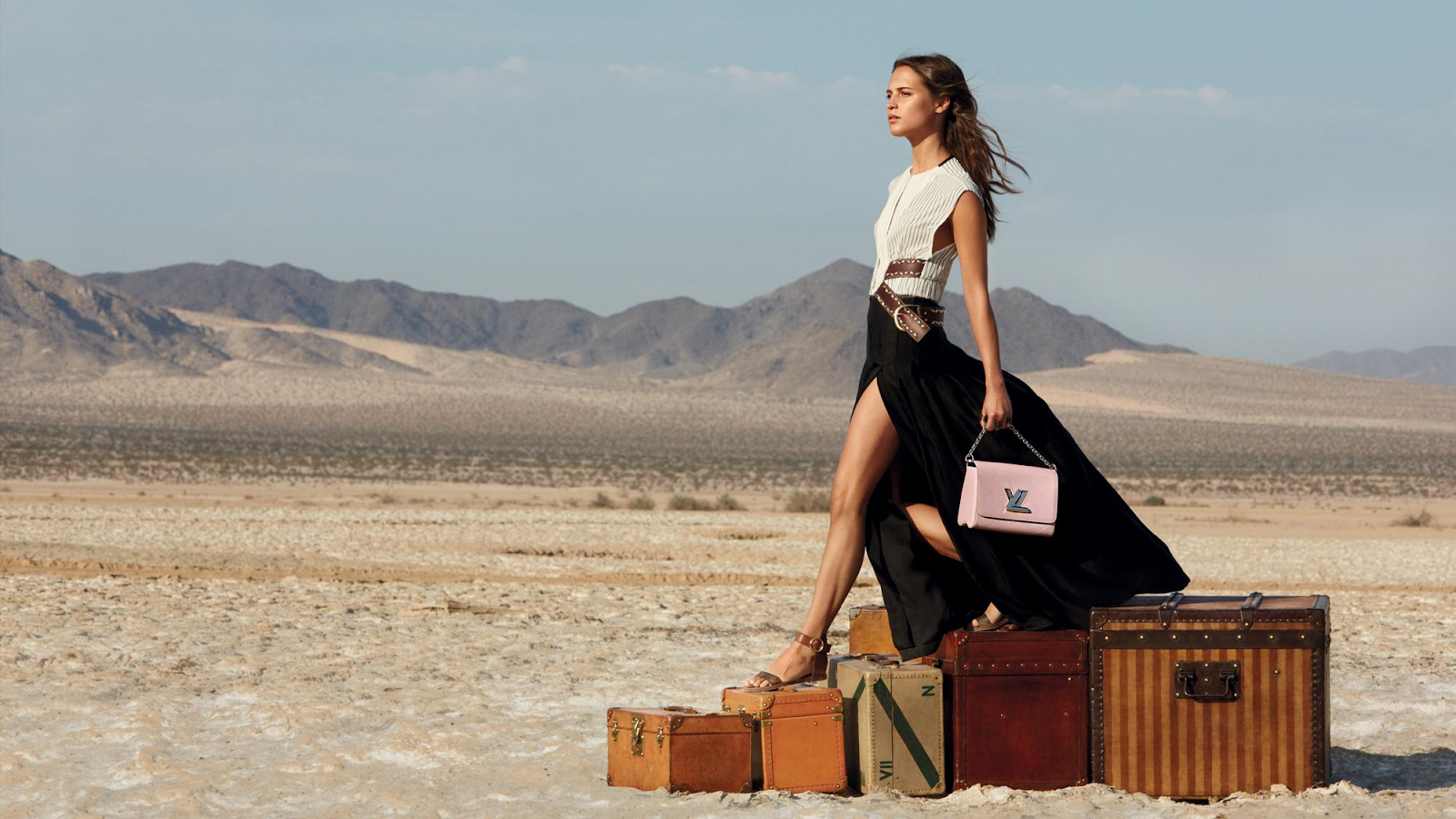
Louis Vuitton’s luxury ad campaign masterfully captures the essence of the brand and effectively resonates with their target audience primarily with:
- Exclusivity and Status: By featuring high-profile celebrities or influencers who embody the brand’s values and aesthetic, Louis Vuitton enhances their prestige and allure, reinforcing their status as a symbol of luxury and sophistication.
- Visual Aesthetics and Cinematography: Louis Vuitton’s ad campaigns are known for their visually stunning aesthetics and cinematic quality. The “Spirit of Travel” campaign utilizes breathtaking imagery, evocative landscapes and meticulous cinematography to create a captivating visual experience. The attention to detail, artistry and beauty in the visuals resonate with the brand’s target audience, who appreciate the visual language of luxury and elegance.
Dive Deeper: The Power of Storytelling in Marketing: How to Engage Your Audience
Strategy Tips for Targeting People with Luxury Ads
Crafting evocative and beautiful luxury ads is only half the battle, however. A compelling ad needs to be presented in the right space to appeal to the intended audience.
Here are some tips for targeting the right people with your advertisements.
Determine the Ideal Placements for Your Ads
Paid search ads and display ads are great options for targeting the right audience. Choose placements where affluent consumers are more likely to see your ads.
Opt for visual placements as often as you can, such as:
- Microsoft Ads: Microsoft’s search engine, Bing, is commonplace for older, more affluent users, making it an ideal placement for paid search and display network ads for luxury companies. Users on Bing may be more receptive to luxury ads than other search engines.
- Visually rich ads: This could include video spots or display ads in most cases, but ads on social media and YouTube are also viable options.
- Qualify your audience: If you plan to use paid search ads on Google or Microsoft, you should omit phrases that tie to low-income users. Terms like “cheap,” “low-cost” and “free” are usually associated with users that are sensitive to their spending limits, and this likely makes them a poor match for luxury products.
- Write evocative ad copy: The ad copy in luxury advertisements has to appeal to an experience. The messaging should orbit around the sensation and value that comes from whatever you’re selling. Use ad copy that speaks to your target audience and emphasizes the unique features and benefits of your product or service. If this can be distilled into one or two words, it can give users the impression of cleanness and minimalism. Take Dior’s skincare product line, for example, which reads “Capture Youth” – a clean and succinct signal of what the product entails:
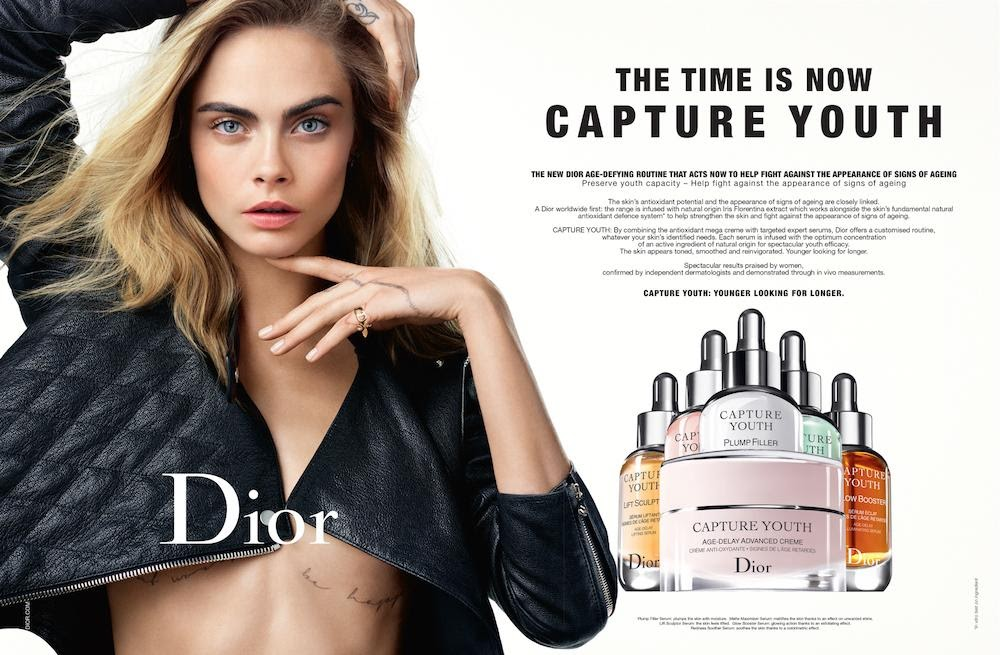
Dive Deeper: 13 Jewelry Advertising Ideas to Increase Leads and Sales
Tailor Your Website to User Experience Above all Else
Back up your offer with a site of substance. Take the steps to present a clean and concise website interface that subtly guides the user to where you want them to take action.
But at the same time, be relaxed about it. Luxury buyers are rarely in a rush to obtain whatever it is you’re selling. Their “needs” aren’t the same as practical needs.
Luxury businesses aren’t selling a solution to a problem so much as they are selling a life-augmenting experience. Your ads should reflect that.
Luxury buyers will typically have the time and flexibility to ease into a purchase of a luxury product or service. Prospects that truly want to embrace your brand won’t do so impulsively. They’ll seek an emotional connection with what you’re offering and evaluate why it will or won’t bring them joy.
Be Wary About Using Automation
It’s important to approach automation with caution, especially in paid advertising placements where there is a growing trend toward machine learning.
Luxury businesses are often hesitant to adopt automation, just as they were when they first entered the digital world because there is more at stake with their brand equity than with other brands. Even a single word change can change the intended meaning of a luxury brand’s ad copy, sending a completely skewed message.
However, in today’s AI-driven world, where businesses are using machine learning in their digital marketing strategies, luxury companies should view automation as an opportunity for growth rather than simply a risk to avoid.
When used smartly (and closely monitored), automation can be useful for luxury business ads, but it should be approached with a higher degree of caution.
Here are some principle examples:
- Responsive Search Ads (RSAs): Use ad copy testing to reveal the best combination of headlines and descriptions based on individual searches. Given the ever-evolving customer base of luxury companies, automation could provide advertisers with the insights they need to successfully engage with their target audience while still allowing them to control the wording in each line.
- IF functions: These can be used to serve hyper-relevant ad copy that is irresistible to the consumer. For instance, if a consumer views a new collection page and later searches for your brand, you can show them a tailored ad copy highlighting the uniqueness of the collection along with exclusive offers when shopping on the official online store. This is possible thanks to automation.
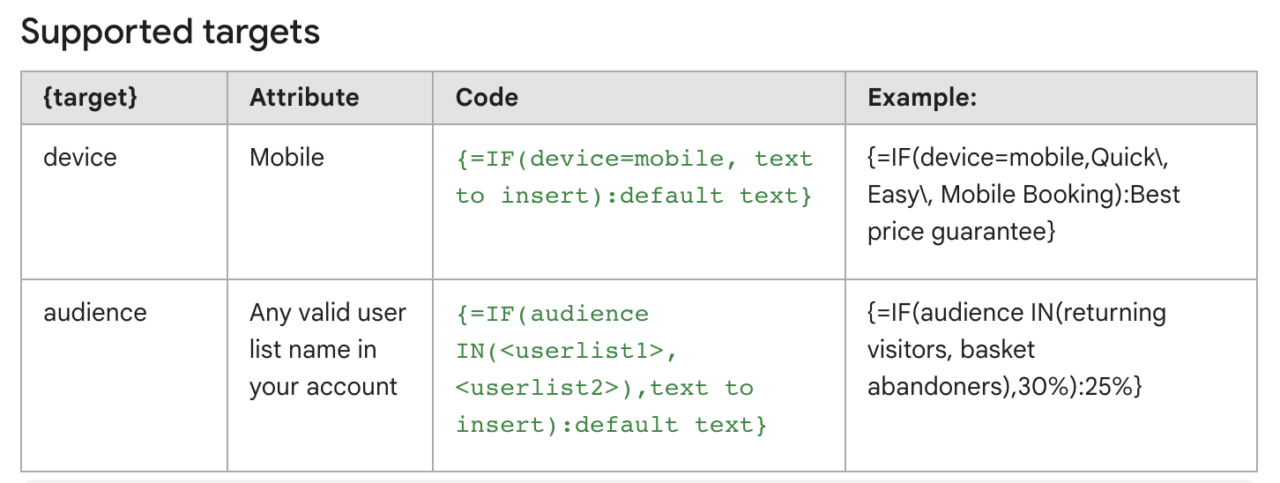
- Dynamic Keyword Insertion (DKI): This is another feature that can be used to make ad messages more relevant to the audience. By including keywords that match their search terms, you can make your ad stand out as Google displays the matching search terms in bold. This not only attracts searchers’ attention but also increases the likelihood of clicks.
- Programmatic display advertising: Programmatic ads allow brands to target their ads to specific audiences with precision. Programmatic advertising uses algorithms to purchase ad inventory in real-time, which ensures that ads are served to the right person at the right time. This can be particularly useful for luxury brands that want to target high-net-worth individuals or individuals with specific interests or behaviors.
Dive Deeper: How to Write Hero Headlines to Skyrocket Click-Through Rates
Target Ads Based on User Income Level
Many paid ad platforms will allow advertisers to narrow their audience by specifying their audience’s affluence.
You can use these targeting tools to focus on users with higher incomes who are more likely to be interested in and be able to afford luxury products or services:
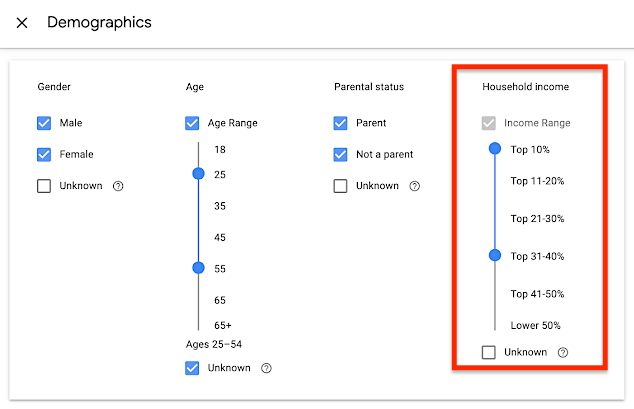
Influencers Are Key
Every brand needs a spokesperson. In the case of luxury products, having a celebrity who wholly adopts your brand can be an escalating factor in your promotion efforts.
Involving celebrity influencers in luxury ads opens the door to tapping into their large and dedicated fan base. By partnering with a famous person who has a significant following on social media, luxury brands can reach a wider audience and create a buzz around their products.
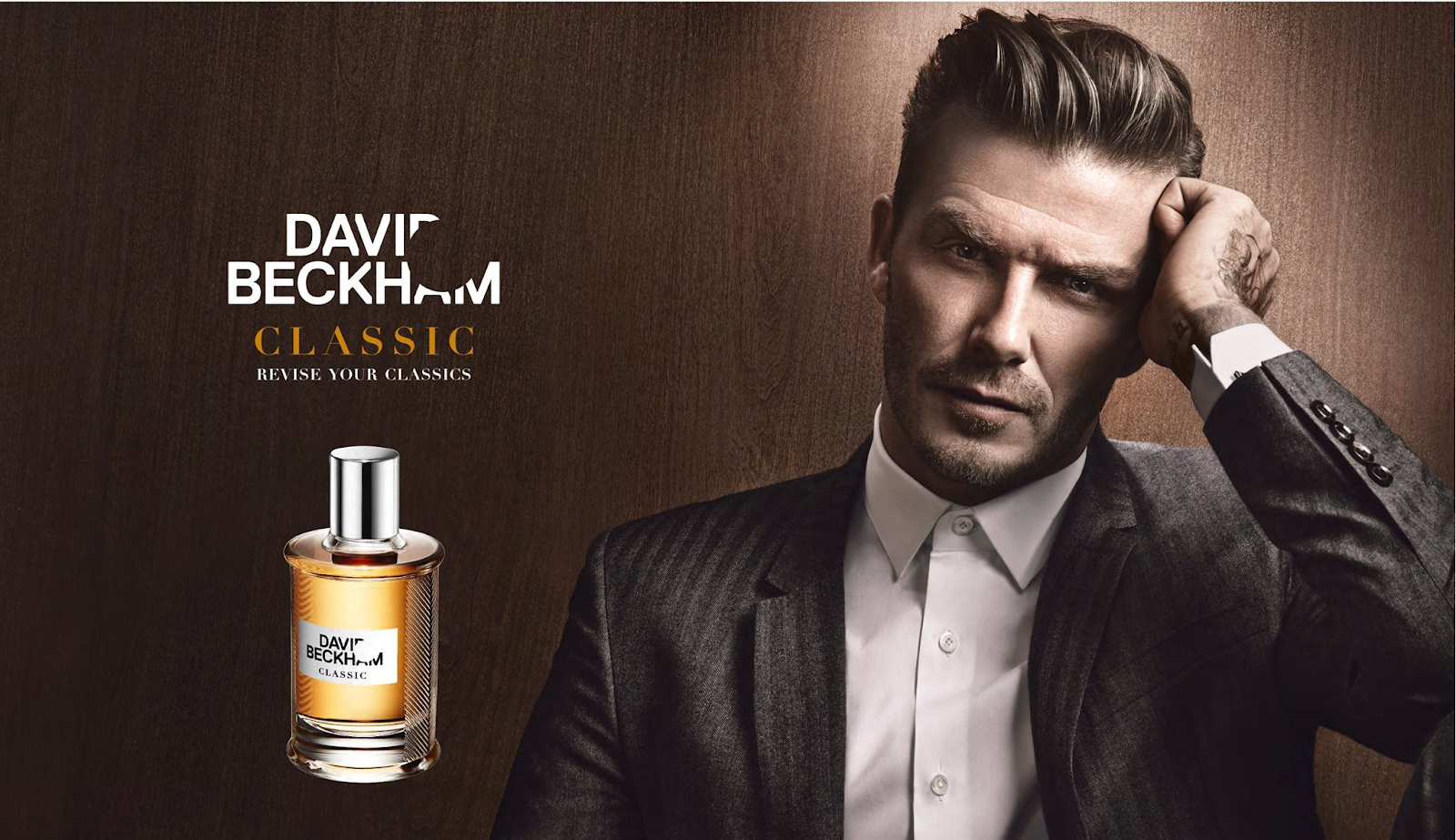
Another benefit of using celebrity influencers in luxury advertising is the ability to associate the brand with the celebrity’s personality and lifestyle. By carefully selecting the right celebrity to partner with, luxury businesses can align their brand values and messaging with the celebrity’s persona, creating a natural and authentic connection that resonates with consumers.
Moreover, celebrities are often seen as trendsetters and style icons, making them ideal for showcasing luxury fashion and accessories.
By featuring a celebrity wearing or using their products, luxury brands can create a desire among consumers to emulate the celebrity’s fashion choices and incorporate the brand into their own personal style.
However, it’s important for luxury businesses to be strategic in their use of celebrity influencers. The wrong celebrity can do more harm than good to a luxury brand’s reputation. The celebrity should comfortable with the brand, and their values and public persona should align with the brand’s image.
Luxury companies should be openly transparent about their partnerships with celebrities, ensuring that their advertising is clearly marked as sponsored content.
This helps to maintain trust and credibility with consumers, who are increasingly demanding authenticity and transparency from the brands they support.
Dive Deeper: Influencer Marketing Strategy: The Ultimate Guide to Growing Your Business with Brand Partnerships
Last Word on Luxury Brands Ads
Luxury ads are different than regular ads, as you can see. They appeal to a different type of buyer psychology – one that is focused on experience, sensation and living life to the fullest.
Remember that your focus should be delivering value that helps support a fun lifestyle and the desire for a certain feeling.
It’s virtually impossible to present luxury material as if it’s necessary, so you must steer into honing promotional language that touches your audience’s emotions and a deeper desire to reinforce their esteem.
If you’re ready to level up your luxury business with the right ads, Single Grain’s ad experts can help!👇






